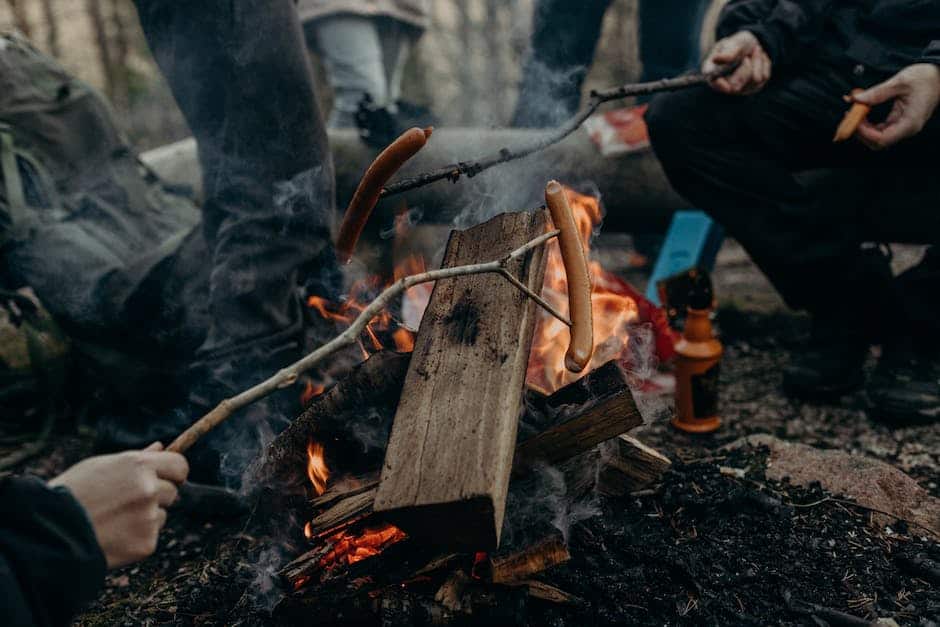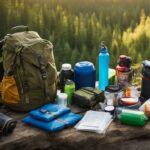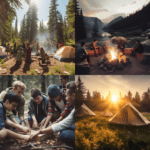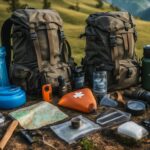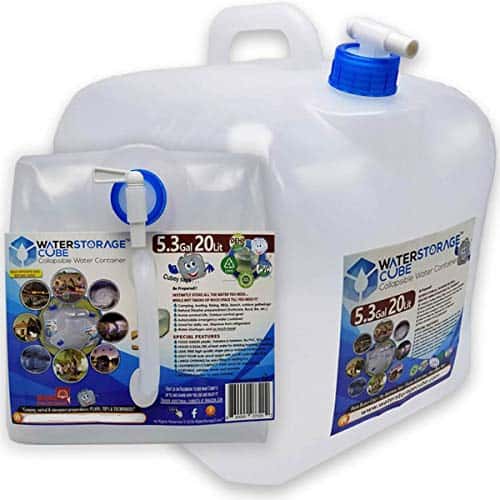Are you ready for an emergency? Being prepared is essential to survival, and having a strong plan can make all the difference when facing challenges. But what happens when your resources start running low? This is where the importance of gathering natural resources and hunting comes into play. As a professional in emergency survival, my aim is to clarify these skills, so you are ready to tackle any difficult situation.
Foraging and hunting are two ancient ways of finding food, and they’ve been used since time immemorial. In today’s world, there may be less need for them than before – but if things go south it could mean life or death. Fortunately, I’m here to show you how easy it can be to track down sustenance in unexpected places. It won’t just help keep you alive; it will also give you back a sense of freedom that comes from being able to provide for yourself regardless of what happens around you.
From identifying edible plants to trapping game animals, I’ll cover everything necessary for successful foraging and hunting during SHTF conditions. So don’t wait any longer: join me on this journey towards self-reliance and liberation!
Definition Of SHTF
SHTF stands for “Shit Hits The Fan”. It describes a catastrophic event that causes society and infrastructure to collapse, leaving individuals with no access to resources or government assistance. In this situation, it’s up to the individual to fend for themselves in order to survive. This means they must become self-sufficient in food production and acquisition by learning how to effectively hunt, fish, and forage.
Foraging refers to the process of collecting wild plants or animals as sources of nutrition when other options are not available. Hunting involves tracking down animal prey using weapons such as bows and arrows, guns, spears, knives etc., and then killing them for consumption. Both activities require certain skillsets that can be honed through practice and experience over time.
In order to stay alive during SHTF scenarios, being able to find sustenance from natural sources is essential. And so having the necessary knowledge and equipment becomes even more important.
Necessary Skills And Equipment For Foraging And Hunting
Now that we’ve established what SHTF is and why it’s important to be prepared, let’s dive into the skills and equipment needed for foraging and hunting.
First, you’ll need a good understanding of the area you’re in so you can recognize edible plants, animals and other resources available. You should also carry some basic tools with you such as a knife, water bottle or canteen, tarp, rope and fire-starting materials like matches or flint. Additionally, if you plan on hunting animals for food, having a reliable firearm will come in handy.
Next up is developing your tracking abilities. Knowing how to read animal tracks is essential if you want to find prey when out hunting. Taking time to observe nature around you – from bird calls to rabbit footprints – can give clues about where game may be moving towards or away from. Also pay attention to weather patterns and seasonal changes that could affect the availability of certain animals or food sources in an area. Finally, remember that patience is key when trying to locate potential meals while out in the wild!
Identifying Edible Plants In The Wild
The smell of fresh air and the sight of lush foliage in a wooded area can fill you with an undeniable sense of awe. But when it comes to shtf survival, it’s important to remember that these areas can also provide sustenance if you know what plants are edible and how to identify them correctly. With this knowledge, you can begin your journey into foraging and hunting wild food sources.
The most important thing to remember is that not all plants are safe or edible. You must take time to learn which species are beneficial, so look out for signs such as thorns or spines on stems, leaves with jagged edges, milky sap secretions from broken stems, sticky hairs on leaves or bulbs growing underground. If any of these features appear then there’s a good chance the plant may be harmful and should be avoided.
Of course, some edibles have very distinctive characteristics like bright colors which make them stand out from other vegetation in the environment making them easy to recognize easily; however don’t rely solely on color alone since there are many poisonous mimics out there! It’s best to study up on a few local edible varieties before beginning your hunt – just check online resources or ask experienced locals who will likely have more information than books offer.
Once you’ve identified an edible variety, get ready for preparing wild foods for consumption – from harvesting techniques to preservation methods that ensure maximum nutrition value remains intact.
Preparing Wild Foods For Consumption
Once you’ve gathered wild foods and hunted game, it’s important to know how to prepare them for consumption. This is not only necessary in order to make sure that the food is safe and edible, but also helps ensure that the most flavor and nutrition are retained from each meal.
First of all, when handling any animal or fish, be sure to clean it properly before cooking it. Start by removing the hide and guts immediately after killing the animal – this will help keep bacteria from spreading throughout the meat itself. Once these have been removed, rinse off the carcass with cold water before beginning your preparation process. Be sure to cook any meats thoroughly so as to avoid health risks associated with consuming undercooked game.

Next step is to consider your options for preparing meals out of whatever ingredients you’ve managed to gather or hunt down through shtf survival techniques. In some cases, certain vegetables may need to be boiled first in order to soften them up enough for eating; while other raw ingredients can be consumed directly without much prep work required at all. As a general rule of thumb, try experimenting with different methods until you find one that best suits your taste! With a little bit of practice, soon you’ll become an expert at creating delicious meals even during times of scarcity and unrest.
No matter what type of cuisine you prefer or which ingredients you’re using – always remember safety comes first when preparing wild foods for consumption! Now let’s take a look at some principles of trapping and fishing…
Principles Of Trapping And Fishing
Trapping and fishing for food is a common skill amongst shtf survivalists. Knowing how to successfully trap and fish can help you survive the aftermath of an apocalypse or natural disaster more easily. In this section, I’ll cover the fundamentals of trapping and fishing in order to increase your chances of having enough sustenance during SHTF scenarios.
First, let’s talk about traps. Traps are designed to capture animals with minimal effort on your part so that you can have a steady supply of fresh meat without having to hunt them down yourself. There are many types of traps available; snares, deadfalls, cage traps and box traps are some examples of effective trapping methods. You should also consider the laws governing trapping in your area before attempting it as they vary from place to place.
In addition to knowing what type of trap to use, you must also understand the principles behind setting up these traps correctly. The key factors involved include: placement (e.g., near water sources), bait selection (prey-specific baits work best) and camouflage techniques (making sure your trap isn’t visible). Once you’ve got these basics mastered, you’ll be able to set up efficient traps wherever needed!
Fishing is another way for foraging food during an emergency situation but requires different skills than those used when trapping small game. When planning out where and how much time to spend fishing, there are several important points to keep in mind: weather conditions like temperature and wind speed; presence of aquatic vegetation; availability of structure such as logs or rocks which attract prey; seasonality; gear selection based on species targeted; proper technique when casting or trolling lures/baits etcetera.. With all these components taken into consideration, you can maximize your efforts while enjoying a fun activity at the same time!
Now that we’ve discussed the basics of trapping and fishing for food, let’s move onto basic hunting guidelines and techniques that will improve our success rate even further!
Basic Hunting Guidelines And Techniques
Hunting for food during a SHTF situation is like playing chess; you must outwit your opponent. To be successful, one needs to understand the basics of hunting and how to implement them into their own skillset:
| Guidelines | Techniques |
|---|---|
| Know Your Prey | Tracking & Stalking |
| Be Prepared | Animal Communication/Calls |
| Be Patient | Baiting & Blinds |
Knowing your prey is essential as it enables you to understand animal behavior, habitat, and diet. Being prepared requires having the right equipment such as camouflage clothing, weapons, ammunition, scents or lures, and navigation tools. Patience is also key in any hunt—wait for the perfect opportunity before taking action. Furthermore, tracking and stalking are necessary elements of hunting that involve reading tracks or signs along with understanding an animal’s movements within its environment. Additionally, utilizing animal communication or calls can help attract animals closer to where one is located. Lastly baiting and blinds are useful tactics used by hunters when trying to lure animals close enough for harvestable range.
With these guidelines and techniques in mind, anyone looking to supplement their survival supplies through hunting has all they need at hand to do so effectively. Now that we have discussed catching our meal let us move on to preserving it for long-term storage.
Food Preservation Strategies For Long-Term Storage
Foraging and hunting for food is the first step in SHTF survival, but having a plan to preserve that food for long-term storage is just as important. There are several strategies you can employ to ensure your food remains safe throughout any emergency situation.
Here’s a list of techniques you should consider when preserving food:
- Canning – This method involves sealing off jars with airtight lids so that bacteria cannot enter. The contents must be heated before being stored.
- Freezing – Storing foods at very cold temperatures slows down the growth of bacteria and keeps them from spoiling too quickly. It helps retain their freshness and nutritional value over time.
- Dehydrating – This process removes moisture from foods so they don’t spoil or rot easily. Dehydrated items can last up to five years if sealed properly in an airtight container.
- Smoking – By using smoke, heat, and salt, this method can dry out proteins like fish or meat while still retaining flavor and texture. Smoked products will typically last longer than other methods of preservation.
Knowing how to preserve your food supply is one of the most crucial aspects of surviving in an emergency situation. It provides nutrition during hard times and peace of mind knowing there’s always something available to eat no matter what happens around you. With proper planning and preparation, you’ll have an ample supply ready whenever needed! And now let’s move onto building a home-based emergency pantry…
Building A Home-Based Emergency Pantry
Foraging and hunting for food is a great way to supplement your long-term emergency pantry. It’s an important skill that can prove invaluable in times of need. Not only does it provide you with fresh, nutritious ingredients, but it also gives one the opportunity to get closer to nature. Here are some ways to start building your home-based emergency pantry through foraging and hunting:
First, familiarize yourself with local plants that you can use as food sources. Many edible wild plants exist right in our own backyards or even in urban areas. The best way to learn about these is by getting out into nature and observing what’s available. You could also research online or join a community group that focuses on wild edibles.
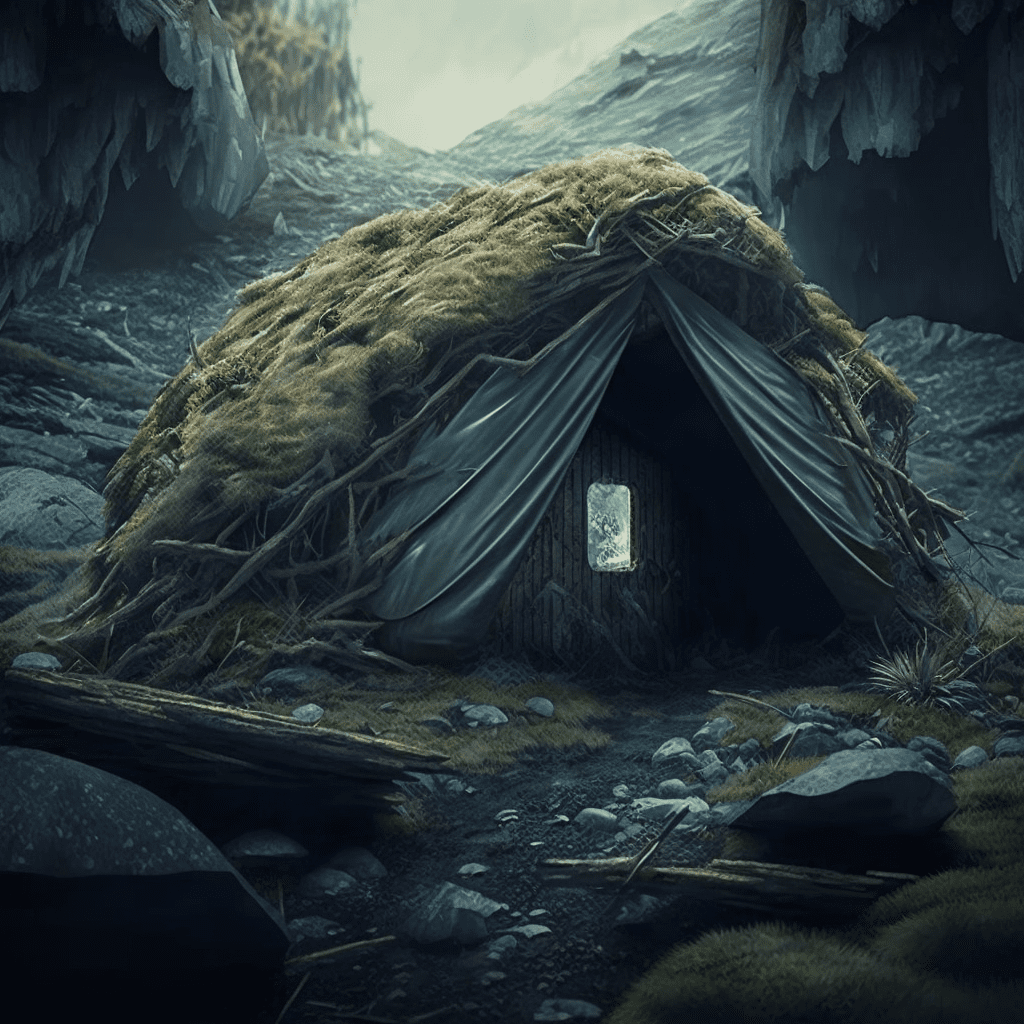
Second, consider trying your hand at small-game hunting like rabbits, squirrels, ducks or geese. Investing in the proper equipment such as guns, traps or nets will help ensure success. Be sure to check regulations before heading out so you know exactly what’s allowed where you live. Additionally, practice ethical hunting techniques – not just because it’s mandated by law but because it’s simply the right thing to do!
Finally, don’t forget fishing! If there are nearby streams or lakes stocked with trout or other fish species then this may be a good option for supplementing your diet during shtf scenarios. Make sure you have all the necessary licenses and gear required prior to setting off on any fishing excursions. With enough practice and patience you should soon be able to bring home plenty of tasty meals from your angling efforts!
With these tips under your belt, you’ll be well prepared when faced with any kind of shtf situation involving food scarcity. Foraging and hunting requires knowledge and experience which makes them both important skills to master if SHTF ever comes knocking at your door! In addition to providing sustenance in dire circumstances, gathering wild foods has numerous benefits for mental health – something we’ll explore more deeply in the next section…
Benefits Of Foraging And Hunting On Mental Health
Foraging and hunting are activities that can be incredibly rewarding, both physically and mentally. Not only do they provide a source of food, but they also offer an opportunity to connect with nature in a way that is not often possible when relying on store-bought ingredients.
The physical demands of foraging or hunting require focused attention and concentration, which helps to reduce stress levels and increase productivity. Additionally, hunting has been linked to improved mental health outcomes including increased focus and clarity of thought as well as reduced anxiety.
The act of foraging or hunting also provides invaluable life skills such as tracking animal movements, recognizing edible plants, understanding seasonal changes in the environment, and honing problem-solving abilities all of which have been found beneficial for cognitive development. It also allows people to practice self-reliance while developing their own unique set of outdoor survival skills.
What’s more, spending time outdoors is known to elevate mood levels due to exposure to fresh air and natural light. This connection with nature has a calming effect that encourages creativity and reflection; it also gives us space away from our everyday lives so we can return feeling refreshed and reenergized. Transitioning into this next section about ethical considerations with foraging and hunting—it’s important to understand how these practices fit within the larger context of sustainable living.
Ethical Considerations With Foraging And Hunting
When foraging and hunting in a SHTF survival situation, it’s like walking on eggshells. You are taking from nature what rightfully belongs to her and you need to tread lightly. Like an orchestra conductor, every action must be carefully considered or else the music will sour.
First and foremost, respect your environment and all living creatures who inhabit it. Respect their natural habitats; don’t take more than necessary or disrupt the ecosystem too much by over-hunting one species of animal or by picking too many fruits or vegetables at once.
Also, strive to leave no trace behind – nothing should remain that could have been caused by human presence. Be respectful and treat animals humanely when possible, even if they’re predators that may threaten your safety later down the line.
On top of being mindful of the land around you, consider other people’s property as well. Don’t trespass onto private grounds unless absolutely necessary; this also applies to fishing ponds owned by someone else – keep out! That same rule goes for any sites with cultural significance – these areas should not be disturbed.
As tempting as it might seem, avoid scavenging through abandoned houses unless completely necessary; chances are there is still someone residing nearby who did not evacuate yet but instead chose to stay put in order to protect their home from looters.
Foraging and hunting can sustain life during times of extreme hardship, but always remember that respecting Mother Nature comes first so we may continue thriving together for generations ahead.
Frequently Asked Questions
What Is The Best Way To Store Foraged And Hunted Food?
When foraging and hunting for food, it is important to store what you have found in a way that prevents spoilage. Proper storage of foraged and hunted food will ensure that you are able to make the most out of your resources. There are several different methods one can use when storing foraged or hunted food.
One popular method is preserving through salting or drying. Salting or drying helps remove water from the food, slowing bacterial growth and increasing its shelf life. For longer-term storage, freezing is also an option as long as all air has been removed from the frozen package before sealing and storing it away. This keeps bacteria at bay so that your food won’t go bad quickly.
Another storage option is fermentation, which adds beneficial bacteria to your food while increasing its nutritional value. Fermentation also preserves vitamins and minerals in foods like fruits and vegetables so they stay fresh much longer than if stored without this process. Lastly, pickling allows foods to last even longer by adding vinegar and spices into the mix as well as other acids such as lactic acid which help preserve enzymes needed for digestion.
No matter how you choose to store your foraged or hunted food, always be sure that containers are properly sealed, labeled with dates to keep track of expiration times, and kept in cool environments where temperatures don’t fluctuate too drastically throughout the day. With these tips in mind, you can rest assured knowing that your hard work collecting natural sustenance will not go to waste!
What Are The Most Common Safety Procedures To Follow While Hunting?
When it comes to hunting, safety is of the utmost importance! As a SHTF survival expert and instructor, I have seen far too many people get hurt or worse due to their lack of preparation. It’s an incredibly important skill that must be mastered before you ever set foot in the woods.
For starters, you should always carry your firearm safely and securely. This means having a good holster for easy access as well as being able to unload any ammo if necessary quickly. You should also wear blaze orange clothing so that other hunters can easily see you from afar. Moreover, never point your gun at anything unless you’re sure it won’t cause injury or death – this includes yourself!
It’s also essential to research the area where you plan on hunting ahead of time. Knowing what animals are native there, what they like to eat, and when they typically come out will save you a lot of wasted effort. Additionally, make sure to check with local law enforcement or game wardens before heading out just to be sure everything is legal and up-to-date.
One final reminder: even though we all want to bring home some delicious wild game for dinner, don’t forget about conservation either! Always practice catch-and-release whenever possible so future generations can enjoy nature just as much as we do today. When done responsibly, hunting can be both safe and rewarding for everyone involved!
How Do I Recognize A Poisonous Plant In The Wild?
As an SHTF survival expert, I’m often asked about how to identify dangerous plants in the wild. It’s important to know which plants are safe and edible – and which ones could make you sick or worse! To help you stay safe while foraging and hunting, here are a few tips on recognizing poisonous plants:
- Look out for red berries or fruits – these can be extremely toxic and should always be avoided.
- Check the leaves – some poisonous plants have smooth edges, while others may have jagged edges or spines.
- Pay attention to odors – many poisonous plants give off strong unpleasant smells that will alert you before coming into contact with them.
- Research ahead of time – take some time to learn about the local plant species in your area so that you’ll be able to recognize potential threats.
Learning what is safe to eat when foraging or hunting during an SHTF situation is essential for staying alive. That’s why it pays off to familiarize yourself with the signs of poisonous plants in advance—so that you don’t accidentally ingest something harmful in a moment of desperation! For example, some common warning signs include bright colors (like red), strange odors, sharp/spiny leaves, as well as any changes in taste or texture from similar non-toxic varieties. Keeping all this information in mind can help ensure your safety when hunting or scavenging for food during an emergency situation.
In addition, having knowledge of basic first aid and knowing how to treat symptoms associated with poisoning can also come in handy if someone does happen to consume a hazardous plant by mistake. From stocking up on medicinal supplies like charcoal tablets, baking soda solutions & activated charcoal capsules; to learning how use natural remedies like plantain tea & honey–there are plenty of ways one can prepare themselves against possible exposure. Taking such steps now can save precious time and energy later on down the road if ever faced with such a scenario!
Are There Any Legal Restrictions To Foraging And Hunting In Certain Areas?
It’s absolutely essential to understand the legal restrictions of foraging and hunting in certain areas before you even start. Not only could you be putting yourself at risk by taking part in illegal activities, but it would also be a huge waste of your time if you get caught! That’s why I’m here – to help make sure that doesn’t happen.
Foraging and hunting have been around since ancient times, so it should come as no surprise that laws vary from place to place when it comes to these activities. It pays off to take the time and do some research on local regulations beforehand – disregarding them can land you in hot water with hefty fines or worse. On the flipside, understanding what is allowed and where will provide countless opportunities for sustenance without running afoul of the law.
To stay safe while out exploring nature’s bounty, be sure to equip yourself with knowledge about any relevant rules first; otherwise, all your hard work might go up in smoke like a supernova! Educate yourself on specific regulations regarding permits or licenses needed, bag limits, seasons during which animals may not be hunted or taken away from their habitats, and other important considerations. With this information firmly tucked away in your brain, you’ll soon become an expert outdoorsman who knows exactly how far they can go safely within existing parameters.
Is It Necessary To Have A License To Hunt In Certain Areas?
When it comes to foraging and hunting, one of the most important questions to ask is whether or not a license is necessary. Depending on where you are located, this can vary greatly from area to area. In some places, a valid hunting license may be required in order for you to legally hunt certain game species; while in others, no license at all may be needed.
To ensure that your activities are legal and safe, I recommend doing research first into local hunting regulations before heading out into the field. It’s also a good idea to contact your state wildlife commission if there is any confusion about the type of license and permits needed. They will have detailed information regarding licensing requirements and other laws pertaining to hunting in their respective states or provinces.
If you need help with navigating state or provincial law related to foraging and hunting, don’t hesitate to reach out and seek assistance from an experienced shtf survival instructor who can provide further guidance on the matter. This way, you’ll know exactly what you’re allowed -and not allowed-to do when it comes time to go out looking for food during an SHTF situation!
Conclusion
Surviving during a SHTF event isn’t easy, but it is possible with the right knowledge. Foraging and hunting for food can be one of your best resources to find sustenance in an emergency situation. It’s important to understand how to store any found or hunted food safely so that it doesn’t spoil and what safety procedures need to be followed while you hunt. Knowing which plants are poisonous and safe to eat in the wild will help ensure you don’t get sick from eating something dangerous.
It’s also essential to know if there are any legal restrictions on foraging and hunting in certain areas before taking action, as this could put you at risk of criminal charges or fines. Finally, having a license might be necessary depending on where you’re located – make sure to do your research ahead of time!
In conclusion, proper preparation is key when learning shtf survival lessons such as foraging and hunting for food. Being able to recognize edible plants in the wild, understanding safety protocols while hunting, knowing local regulations – these all play a role in making sure you have enough sustenance in case of an emergency. Now is the time to start preparing yourself by doing some research and getting familiar with these important topics.


